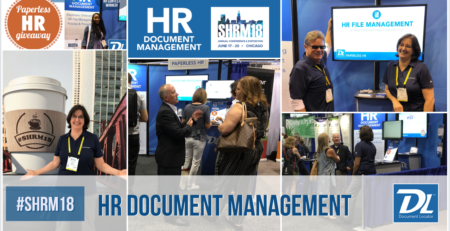As an HR leader, consistency and accountability are two factors that are critical to how your HR records are managed. They are foundational to your work, and overarching in importance.
Centralize HR records in an electronic document management system
Aggregate, organize, store, and control HR records in accordance with your business’s rules and in a way that makes sense within your unique structure. Add documents by scanning or uploading from your network, in bulk or individually including faxes and emails. Immediately, all documents become full-text-indexed, so you can search for words or phrases and find any document in seconds. This eliminates the biggest pain every HR professional faces: the realization of “Where did we keep that?”
Role based security controls access to HR records
Role-based security can be applied to every user and controls access to sensitive information. If you don’t have permission you can’t see the record. Administrators can easily disable a user’s security and reassign documents to others. Only authorized users can delete files. A document log records who and when documents were accessed, and what action was taken. These and other security features enforce accountability.
Integrate with your HCM or Payroll system to synchronize changes
Every time a change happens in payroll, synchronize your updates. For instance, when a new employee is added, have the folder structure for that employee added to the repository automatically. Similarly when an employee leaves the company, have their records automatically moved to an archive folder with retention rules set. These and other automation practices will save you time and assure that HR records are managed consistently.
Records management enforces compliance and reduces risk
Maintain compliance with document retention and privacy requirements for information that falls under regulatory control. Worker’s compensation, unemployment, I-9’s, FMLA, OFLA, classifications, benefits, verifications and more are all managed according to regulations. When required a legal hold can be placed on records.
Report from a high, broad level or from within the most detailed minutia
With data stored in SQL Server, you can query and report on everything. Those with access can quickly see where documents are missing, who hasn’t read and acknowledged a time-sensitive document, and who has been accessing the system and what the documents they’ve created, edited or reviewed. Reporting enhances accountability and improves efficiency, ensuring “right eyes at the right time”
Check out this brief 4-minute video for more ideas on how to better manage your HR files, electronically:







